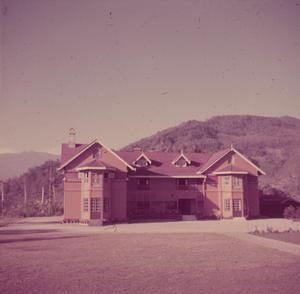Palace
import Media from './components/media'; import { Gallery } from './components/wrappers';
“Gangtok [...] only sights are the Royal Palace, rebuilt a few decades ago [...] The entrance to the palace is guarded by soldiers of the bodyguard, Lepchas equipped with British rifles and wearing an extremely colourful uniform: a red and white striped robe, such as all Lepcha men wear; over this a brilliant red jacket adorned with wide black braid; and a cylindrical hat plaited from reeds and nettles, dyed pink and decorated in front with a few feathers and the royal arms in silver. The windows of the Residency look out on the nearby chain of the Himalayas. Down below in the garden, among gnarled trees and tall tree-ferns, stand brightly painted Buddhist reliquaries and prayer-flags swaying in the wind. At first sight the Royal Palace looks just like a European house, but closer inspection reveals here and there on its outer walls Tibetan characters interlaced to form diagrams. These are magic formulae that serve to keep away demons and ensure the occupants of the house good luck and contentment.”
[Nebesky-Wojkowitz, René von. 1957a. Where the Gods Are Mountains: Three Years among the People of the Himalayas. Translated by Michael Bullock. New York: Reynal and Company, 126–127]
















